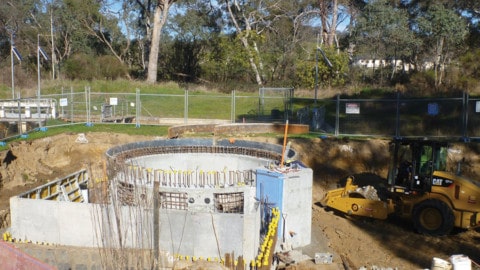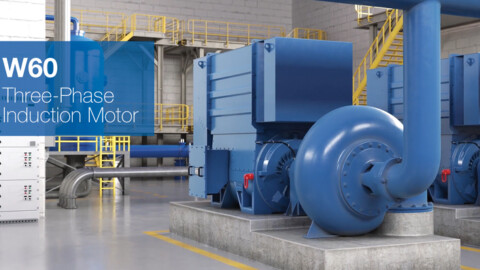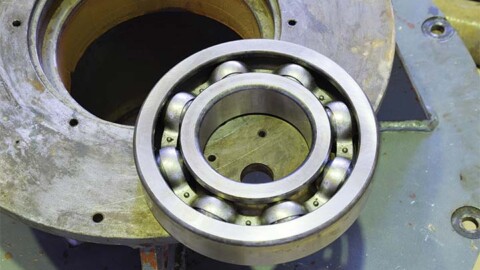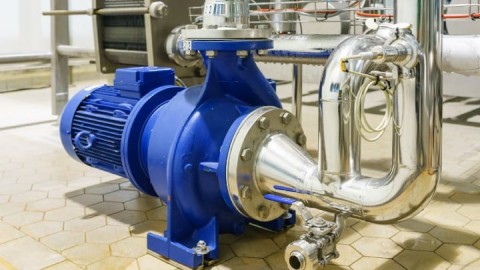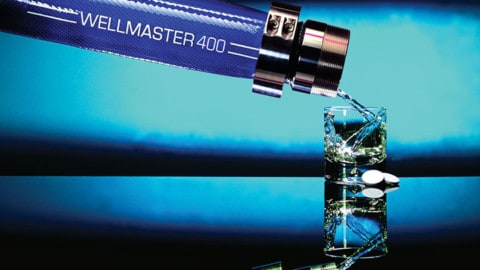The choice between a centrifugal and positive displacement pumps is not always apparent and cannot be made without a full understanding of the differences. The fundamental difference is that positive displacement pumps, with the exception of air operated diaphragm pumps, are basically constant volume machines where flowrates are independent of pressure. Flow is dependent only on shaft revolutions per minute.
The performance chart (Figure 1) illustrates this difference. The centrifugal has varying flow depending on pressure or head, whereas the PD pump has more or less constant flow regardless of pressure.
Viscosity impacts on pump performance in very different ways. Figure 2 shows how centrifugal pump performance reduces markedly as viscosity increases. It also shows that with a positive displacement pump, higher viscosity increases the flowrate. The reason for this is that slippage (flow back towards suction because of differential pressure) reduces with increased viscosity. The volumetric efficiency of positive displacement pumps increases with increased viscosity.
The pumps behave very differently when considering mechanical efficiency as well. By looking at the efficiency chart (Figure 3) you can see the impact of pressure changes on the pump’s efficiency. Changes in pressure have little effect on the PD pump but a dramatic one on the centrifugal.
Another consideration is NPSHr. In a centrifugal the NPSHr varies as a function of flow, and flow is determined by the system resistance (total dynamic head). If the total head varies for any reason, the flow will change and NPSHr will also change as a consequence. In a PD pump NPSHr varies as a function of flow which is determined by speed. At a fixed speed the flow is constant irrespective of pressure and therefore NPSHr is constant.
When comparing the two types of pumps, it is important to understand that a centrifugal pump has an ideal operating flowrate i.e. the flowrate at the best efficiency point. At flowrates other than best efficiency flowrate, other factors need to be considered. Radial loads (the load that applies a bending moment to the shaft) increases at all flowrates other than that at best efficiency.
With a PD pump you can operate the pump on any point of the curve. In fact the volumetric efficiency actually improves at the high speed part of the curve. This is because the volumetric efficiency is affected by slip, which is essentially constant regardless of speed. At low speed, the percentage of slip in relation to volumetric displacement is higher than at high speed.
The data presented in these charts is the actual data for a specific application. The centrifugal was picked at its best efficiency point (BEP) and the PD pump (internal gear) selected to match the flow, viscosity, and pressure. Different applications will have different curves and efficiencies. These curves are presented as an example of the type of performance behavior between the two different principles.
The most obvious reason to use a PD pump is when you have a high viscosity application. It is common knowledge that a centrifugal becomes very inefficient at even modest viscosity. The acceptable viscosity ranges for centrifugal pumps tends to be dependent on pump size. Published data is also variable in this area. We believe that acceptable viscosity limits for centrifugal pumps is as follows for nominal discharge pipe diameters:
≤ 50mm – up to 100 mm²/s
≤ 150mm – up to 250 mm²/s
> 150mm – up to 400 mm²/s
However, there are other reasons to select a PD pump over a centrifugal other than high viscosity. These can be summarised as follows:
- A simple rule of thumb is that a PD pump should be selected where the smallest available centrifugal pump needs to operate at a flow less than 50 per cent of best efficiency flow.
- PD pumps may be a more appropriate selection at low flow, high head applications.
- A PD pump would be used on applications that have variable pressure conditions
- The flowrate from centrifugal pumps will vary up and down the performance curve which can cause process problems. A PD pump will give near constant flow at constant rpm regardless of pressure fluctuations. That makes it possible to match the flow to the system process requirements.
- Hence, PD pumps are ideal for constant flowrate applications. The desire to have constant flow is a reason that a PD pump is normally selected for metering or dosing applications.
- Generally speaking centrifugal pumps tend to shear liquids more as speed is increased and the centrifugal is a high speed pump. This makes certain PD pump types better able to handle shear sensitive liquids. Shear rates in PD pumps vary by design, but some are low shear devices, especially at low speeds. It is important to contact the manufacturer for specific information on PD pump shear rates and application recommendations.
- By their nature, many PD pumps are self-priming, unlike end suction or multistage centrifugal pumps i.e. PD pumps will operate on suction lift without the necessity for a foot valve or a priming chamber on pump suction. This capability can vary from pump to pump so manufacturers’ recommendations must be followed.

Figure 1.

Figure 2.

Figure 3.
Article courtesy of Kelair Pumps Australia







